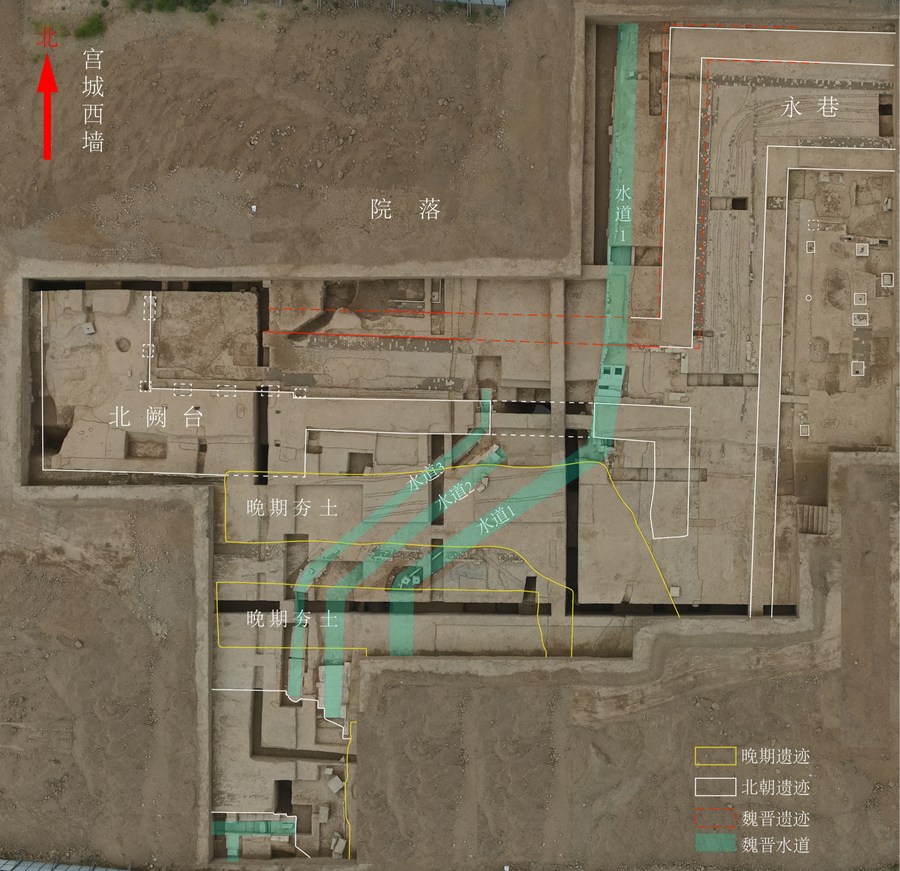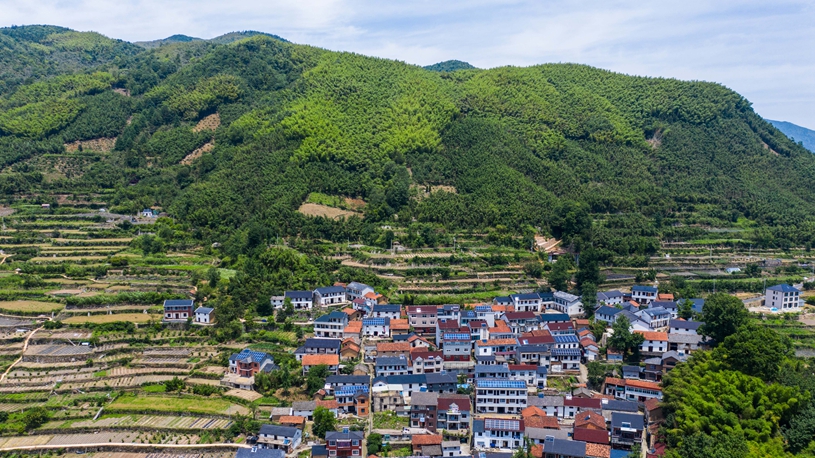
File photo shows part of the ancient water conservancy facilities dating back to the Wei and Jin dynasties (220-420) discovered in Luoyang, central China's Henan Province. (Institute of Archaeology under the Chinese Academy of Social Sciences/Handout via Xinhua)
ZHENGZHOU, June 15 (Xinhua) -- Archaeologists have found three large watercourses dating back to the Wei and Jin dynasties (220-420) in central China's Henan Province.
They are three stone culverts running side by side from southwest to northeast, according to a team on the scene with the Institute of Archaeology under the Chinese Academy of Social Sciences.
The ancient water conservancy facilities were discovered in the relics site of an old palace in the ancient city of Luoyang. Dating back to the Western Zhou Dynasty (1046 B.C.-771 B.C.), the ancient city was in use for more than 1,500 years, including some 600 years of being the capitals of different dynasties.

Schematic diagram provided by the Institute of Archaeology under the Chinese Academy of Social Sciences shows the ruins of an old palace of the ancient city in Luoyang, central China's Henan Province. (Institute of Archaeology under the Chinese Academy of Social Sciences/Handout via Xinhua)
"Although the bottom elevation, scale, and masonry form of the three waterways are slightly different, they are obviously unified in planning and construction," said Guo Xiaotao, deputy head of the team.
Guo noted that historical documents indicate that these waterways were used as channels of water diversion from outside the old palace in Luoyang to the north of the palace.
"These facilities reflect the mature skills of water conservancy projects in the Wei and Jin dynasties, as well as the old city's cognition of the planning, transformation, and utilization of water resources," said Liu Tao, head of the team. ■












